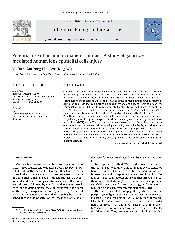摘要
Osmotic stress, together with weakened antioxidant defense mechanisms, is attributed to the changes observed in human diabetic cataract. The use of hirudin, an antithrombic agent, in the pathogenesis of human cataracts has not been studied so far. Since the epithelium is the metabolic unit of the lens, the effect of recombinant hirudin variant III (rHV3) on galactose-induced morphological changes and antioxidant status of human lens epithelial line SRA01/04 in culture was evaluated in this study. The human lens epithelial cells (hLECs) were cultured in D/F(12) medium (normal group), D/F(12) medium+ 50mM D-galactose (control group) or D/F(12) medium+ 50mM D-galactose+ rHV3 (test group) for 24 or 72 h. The cells were observed under the light, fluorescence and transmission electron microscope for any morphological changes, while the cell viability was assessed by methylthiazol tetrazolium (MTT) assay. The cells in flasks were harvested for the estimation of various andoxidant parameters. Cell morphology, viability, malondialdeyde, glutathione and antioxidant enzymes were significantly altered in the control group as compared with the normal group. Administration of rHV3 confers significant protection against these changes in the human lens epithelial cells. These results demonstrated that rHV3 could effectively protect galactose-induced hLEC injury and suggested that it could have potential use in diabetic cataracts.
- 出版日期2008-5-28
- 单位中国药科大学
